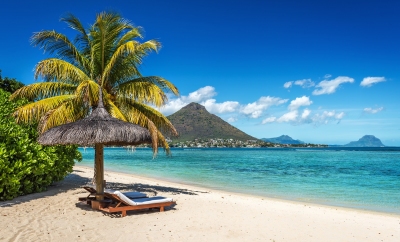
“White City by the Sea” – Agadir has acquired a pretty middle name. However, the name of the town in the language of the Berbers, who once founded a fishing village here, can be translated as “granary”. Be that as it may, Agadir is today a Moroccan tourist stronghold on the Atlantic. And because the climate here is so pleasant and a cool wind almost always blows from the sea, the Moroccan king also liked this region in the south of his country and commissioned the construction of two palaces there.
The beach is nine kilometres long on the doorstep of the city, and it is lined with luxurious hotels and some resorts. However, the more recent history of the city also knows black hours, because on 1 March 1960 the earth wobbled in this region. In the process, 15,000 inhabitants died and Agadir was almost completely destroyed. The historic old city on the Atlantic coast no longer existed, but after the earthquake and seaquake reconstruction began very soon.
Below we present you the most exciting tours, the most beautiful attractions and the best sights in Agadir.
1. The ruin of the Kasbah
High above Agadir the Kasbah of Agadir is enthroned on a hill. It was so badly affected by the earthquake that only one ruin remains today. The Agadir Oufella was a massive structure, 240 meters above sea level, and it initially served to repel enemy forces from the sea side. The Kasbah was built more than four hundred years ago by the Moroccan Saadian dynasty.
Visitors have a beautiful view of the harbour and the beach of Agadir. This is an excursion into the past of an old city that lost everything in one day. In Arabic characters you can read the Kasbah on the mountain: God – King – Fatherland! Numerous cannons secured this fortress before the earthquake. Here there was a mosque, a military hospital, the souk and a small theatre. Anyone who roams through the ruins today will guess how large this complex once was. It also served as a communal granary.
2. Jardin de Olhao
Since the reconstruction of the city, parks and gardens have shone in a fresh splendour. The inhabitants are particularly proud of their Jardin de Olhao. The garden is a symbol of the city friendship between the Moroccan seaside resort and the Portuguese municipality of Olhao. There was already an intensive exchange of goods and ideas between the two countries at the beginning of the 16th century.
The former main entrance to the park on Avenue des Forces Army Royales now houses a small museum. It is supposed to keep alive the memory of that day when hardly a stone remained on top of another in the city. Stamps and newspapers also commemorate the earthquake in the museum. Jardin de Olhao closes in the dark. Admission is free and one of the sights of Agadir.
3. The new Medina
The epicentre of the earthquake in 1960 was directly below the historical medina. Not even ruins have remained of it, and on a bus tour tourists are only shown the location of this once lively centre of Agadir. The so-called “New Medina” is the product of a Sicilian investor who has set himself the task of copying the historical buildings of the old Agadir.
The Italian Coco Polizzi, born in Rabat, Morocco, has chosen Ben Sergao, six kilometres from the outskirts of the city, as the site of this bold project. There will be an artificial lake and a number of shops. Some things are not yet finished, but holidaymakers are already invited today to visit the narrow streets of the new medina.
4. Souss-Massa National Park
The Souss-Massa National Park, one of the region’s largest sights, is located in the southwest of the country, on the doorstep of the city. It has the stately size of 340 square kilometers and was founded in 1991. Two rivers, the Qued Souss and the Qued Massa, flow into the Atlantic Ocean. This terrain is something of an eldorado for ornithologists, as 275 different bird species have been found in the park.
But antelopes, wild boars, jackals, mongooses and porcupines were also found there. The vegetation in the national park resembles a steppe for the most part and forms an interesting coastal strip over 65 kilometres. Who would like to visit this interesting region, should plan a whole day.
5. Fishing harbour with market hall
The fishing port with the market hall attracts many visitors of the Moroccan city almost magically. Here life pulsates, here one comes very close to the everyday life of the inhabitants. Daily the fishermen trade there with their fresh catches from the Atlantic ocean. But in this “souk” there are not only the products of the sea on offer but also every imaginable kind of fruit and vegetable.
The harbour is big and a little confusing. The modern marina, on the other hand, stands out from the area where the fishermen’s cutters anchor. An interesting new residential area with excellent restaurants has also been created there.
6. bird park
Many exotic birds can be seen in the park between Boulevard Hassan II and Boulevard du 2o. Aout. This bird park is an interesting alternative to beach life and sun worship. It is beautifully situated in a small valley in the middle of the city.
This park includes several playgrounds and, in addition to the aviaries of the colourful birds, enclosures for mouflons, llamas and kangaroos. All this is a green oasis of the city, which is also reached by a small train from some hotels. The parks are well maintained and the entrance is free of charge.
7. Souk El Had
Every Saturday and Sunday morning the Souk El Had opens its doors. Here the inhabitants of Agadir, who call themselves “Fadiri”, offer their goods. These are mainly agricultural products from the nearby Souss plain as well as textiles, spices and handicraft exhibits.
All this is presented behind a six metre high wall lined with battlements. It is a bustling market that is supplied by up to 2,000 dealers. Who would like to visit him, should inquire about the way to the Rue Chaib Al Kamra Mohammed Ben Brahim.
8. Museum of Berber Art
The Berbers are still a pillar of Moroccan society, even though today they live in the vastness of the Sahara or in the oases and villages in the shadow of the High Atlas. In Agadir, for example, the Museum of Berber Art is one of the sights.
Next to the municipal theatre, the Ait Souss Passage houses a small but interesting collection of folk art. These are traditional costumes, carpets and chests as well as everyday objects and intarlized doors.
9. Museum Bert Flint
The Dutchman Bert Flint has dedicated himself to the culture of the North African states for many years. He has his permanent residence in Marrakech, where he bequeathed his collection to a museum. A branch of this museum is located in Agadir in the Avenue Mohammed V. near the Hotel Salam. The exhibits from Bert Flint’s private collection mainly include handicrafts and old Berber tools from southern Morocco.
10. Coastal road to Essaouira
One of the most beautiful coastal roads on the Atlantic leads from Agadir to Essaouira. Over eighty kilometres the maritime Morocco presents itself from its most beautiful side. Long stretches of beach, secluded bays and picturesque rock formations alternate on this route. Essaouira is a cosmopolitan melting tingle. The “white city in the wind” has always been the destination of artists and surfers.
More things to do and activities for your Agadir holiday
Best time to visit Agadir
We recommend the following months as best time to travel for exploring the attractions and acivities of Agadir:
May, June, July, August, September, and October
You can find more information about the weather, including all climate data, on our climate page for Agadir.





